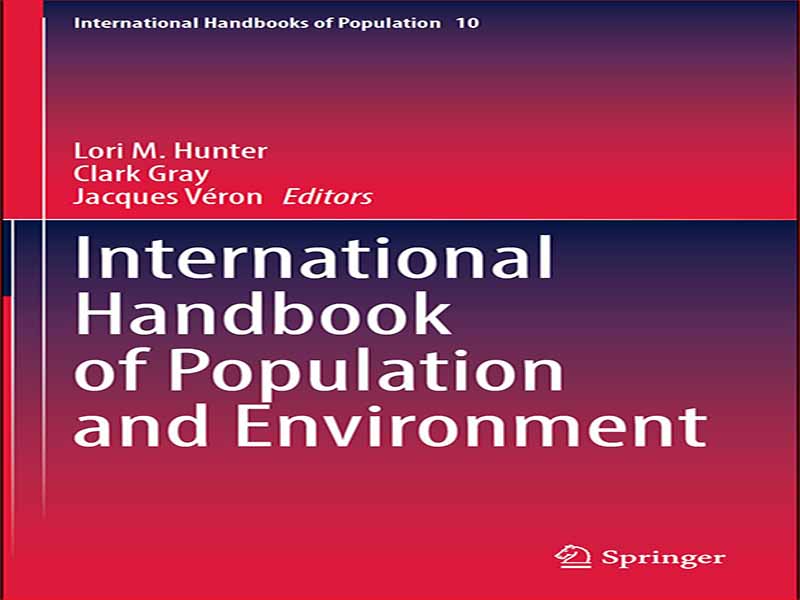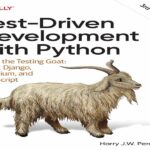- عنوان: International Handbooks of Population
- نویسنده: Lori M. Hunter
- حوزه: جمعیت
- سال انتشار: 2022
- تعداد صفحه: 505
- زبان اصلی: انگلیسی
- نوع فایل: pdf
- حجم فایل: 15.7 مگابایت
توسعه کتابچه راهنمای جمعیت و محیط زیست توسط مرکز Grant #P2C HD06613 که توسط مؤسسه ملی بهداشت کودک و توسعه انسانی یونیس کندی شرایور به مرکز جمعیت دانشگاه کلرادو (CUPC) اعطا شد، پشتیبانی شد. مسئولیت محتوا صرفاً بر عهده نویسندگان است و لزوماً نمایانگر دیدگاههای رسمی NIH یا CUPC نیست. فصل 6 توسط مرکز Grant #R24 HD047873 و کمک هزینه آموزشی #T32 HD07014 به مرکز جمعیت شناسی و بوم شناسی در دانشگاه ویسکانسین-مدیسون و توسط بودجه به Curtis از ایستگاه آزمایشی کشاورزی ویسکانسین و بنیاد تحقیقات Wisconsinum اعطا شد. نویسندگان میخواهند از کیتلین بوربو در آزمایشگاه جمعیت کاربردی در دانشگاه ویسکانسین-مدیسون برای کمکهای ارزشمندش به ارقام ما تشکر کنند. فصل 8 از کمک های تحقیقاتی عالی دیلان کرکینگ بهره مند شد و توسط موسسه ملی بهداشت کودک و توسعه انسانی یونیس کندی شریور حمایت شد. R03HD098357. در رابطه با فصل 10، الیزابت فوسل از حمایت مرکز مطالعات و آموزش جمعیت (NICHD P2CHD041020) و موسسه محیط زیست و جامعه در براون سپاسگزار است. تحقیقات Fussell توسط کمک مالی NICHD R01HD093002 پشتیبانی می شود. برایانا کاسترو از برنامه کمک هزینه تحصیلات تکمیلی بنیاد ملی علوم، مرکز امور بین الملل Weatherhead و دانشگاه هاروارد برای حمایت سخاوتمندانه آنها تشکر می کند. فصل 11 از حمایت ارائه شده به مرکز جمعیت دانشگاه کلرادو (CUPC, Project 2P2CHD066613-06) از سوی موسسه یونیس کندی شرایور برای سلامت کودک و توسعه انسانی بهره مند شد. ما همچنین حمایت بنیاد ملی علوم (Grants 1416960 و 1416860) را تأیید می کنیم. در نهایت، ما همچنین از گفتگو در کنفرانس CUPC در مورد تغییر آب و هوا، مهاجرت و سلامت (پروژه NICHD 5R13HD078101) بهره برده ایم. مسئولیت محتوا صرفاً بر عهده نویسندگان است و لزوماً نمایانگر دیدگاههای رسمی NIH، NSF، یا CUPC نیست. فصل 15 توسط مؤسسه ملی توسعه کودک و انسانی یونیس کندی شرایور، مؤسسه ملی بهداشت (R03HD042003VanLandingham PI؛ R21HD057609VanLandingham PI؛ و P01HD082032 VanLandingham, Abramson, and Waters) پشتیبانی شد. نظرات مفید الیزابت فرانکنبرگ و دانکن توماس با سپاس قدردانی می شوند.
Development of the Handbook on Population and Environment was supported by center Grant #P2C HD06613 awarded to the University of Colorado Population Center (CUPC) by the Eunice Kennedy Shriver National Institute of Child Health and Human Development. The content is solely the responsibility of the authors and does not necessarily represent the official views of NIH or CUPC. Chapter 6 was supported by center Grant #R24 HD047873 and training Grant #T32 HD07014 awarded to the Center for Demography and Ecology at the University of Wisconsin-Madison, and by funds to Curtis from the Wisconsin Agricultural Experimental Station and the Wisconsin Alumni Research Foundation. The authors would like to thank Caitlin Bourbeau at the Applied Population Laboratory at the University of Wisconsin-Madison for her invaluable contributions to our figures. Chapter 8 benefitted from the excellent research assistance of Dylan Kirkeeng andwas supported by the EuniceKennedy ShriverNational Institute of Child Health and Human Development grant R03HD098357. Regarding Chap. 10, Elizabeth Fussell is grateful for the support of the Population Studies and Training Center (NICHD P2CHD041020) and the Institute at Brown on Environment and Society. Fussell’s research is supported by NICHD grant R01HD093002. Brianna Castro thanks the National Science Foundation Graduate Research Fellowship program, theWeatherhead Center for International Affairs, and Harvard University for their generous support. Chapter 11 benefited from support provided to the University of Colorado Population Center (CUPC, Project 2P2CHD066613-06) from the Eunice Kennedy Shriver Institute of Child Health Human and Human Development. We also acknowledge support from the National Science Foundation (Grants 1416960 and 1416860). Finally, we have also benefited from dialogue at the CUPC Conference on Climate Change,Migration and Health (NICHD project 5R13HD078101). The content is solely the responsibility of the authors and does not necessarily represent the official views of NIH, NSF, or CUPC. Chapter 15 was supported by the Eunice Kennedy Shriver National Institute for Child and Human Development, National Institutes of Health (R03HD042003VanLandingham PI; R21HD057609VanLandingham PI; and P01HD082032 VanLandingham, Abramson, and Waters co-PIs). Helpful comments from Elizabeth Frankenberg and Duncan Thomas are acknowledged with gratitude.
این کتاب را میتوانید از لینک زیر بصورت رایگان دانلود کنید:
Download: International Handbooks of Population




































نظرات کاربران